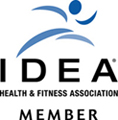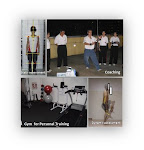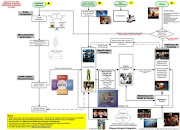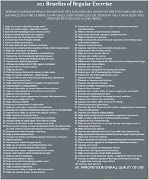 Endothelial dysfunction
Endothelial dysfunctionScientists had recognised that the endothelial wall of the coronary arteries plays a vital role in vascular health. Aging and hypertension are two independent cardiovascular risk factors that have been shown to exhibit increased endothelin-1 system activation (Stauffer, Westby, & DeSouza, 2008). In addition, smoking, elevated low-density lipoprotein (LDL) cholesterol, elevated blood glucose and inflammation attribute to the endothelial dysfunction, the abnormal or impaired physiological function of the biochemical processes carried out by the endothelial cells lining the inner surface of the artery walls. Endothelial dysfunction, particularly vasomotor dysregulation occurs early in the atherosclerotic process, contributes to disease development and progression, and can trigger acute cardiovascular events (Van Guilder, Westby, Greiner, Stauffer, & DeSouza, 2007).
Effect of exercise and dietary on blood lipids
High density protein (HDL) cholesterol increases nitric oxide (a potent vasodilation) production, inhibiting blood cell adhesion to vascular endothelium and reducing platelet aggregability and coagulation (Calabresi, Gomaraschi, & Franceschini, 2003) and hence reverses cholesterol transport, removing cholesterol from the arterial wall.
The positive effects of regular exercise are exerted on blood lipids at low training volumes and accrue so that noticeable differences frequently occur with weekly energy expenditures of 1200 to 2200 kcal/wk. It appears that weekly exercise caloric expenditures that meet or exceed the higher end of this range are more likely to produce the desired lipid changes (improved in HDL cholesterol concentration). This amount of physical activity, performed at moderate intensities, is reasonable and attainable for most individuals and is within the American College of Sports Medicine's currently recommended range for healthy adults (Durstine et al., 2001). Durstine, Grandjean, Cox, & Thompson (2002) had indicated similar results unless dietary fat intake was reduced and body weight loss was associated with the exercise training program, or both.
Aerobic fitness
Aerobic fitness, not merely physical activity, is associated with a reduced risk of cardiovascular disease. Vigorous intensity exercise has been shown to increase aerobic fitness more effectively than moderate intensity exercise, suggesting that exercise performed at a vigorous intensity appears to convey greater cardioprotective benefits than exercise of a moderate (Swain & Franklin, 2006).
Regular and habitual aerobic exercise
Regular and habitual aerobic exercise can prevent the age-associated loss in endothelium-dependent vasodilation (arterial aging) and restore levels (preserving vascular function) in previously sedentary middle aged and older healthy men. This represent an important mechanism by which regular aerobic exercise lowers the risk of cardiovascular disease (DeSouza et al., 2000; Seals, Desouza, Donato, & Tanaka, 2008; Smith, Hoetzer, Greiner, Stauffer, & DeSouza, 2003).
Taichi is an aerobic exercise and is suitable for participants of different ages and gender to improve their functional capacity (Lan, Chen, & Lai, 2004).
Preventive and middle age risk-free
Preventing coronary artery disease (CAD) development since teens, 20s or 30s is essential rather than try to reverse it later. Research done by Stamler and others (2000) on a total of 11,017 men aged 18 through 39 years screened in 1967-1973; men with favourable baseline serum cholesterol levels (<200 mg/dL [<5.17 mmol/L]), had an estimated greater life expectancy of 3.8 to 8.7 years.
Adults who had low risk factors in middle age demonstrated a significantly higher quality of life in older ages compared with those who had three or more risk factors (risk factors increase, quality of life decreases)(Daviglus, Lloyd-Jones, & Pirzada, 2006). It appears that 50 may be the turning point; individuals who are able to read this age with no risk factors have markedly higher survival rates than those with any combination of risk factors (Janot, Dalleck, & Bushman, 2008).
1. Calabresi, L., Gomaraschi, M., & Franceschini, G. (2003). Endothelial protection by high-density lipoproteins: from bench to bedside. Arterioscler Thromb Vasc Biol, 23(10), 1724-1731.
2. Daviglus, M. L., Lloyd-Jones, D. M., & Pirzada, A. (2006). Preventing cardiovascular disease in the 21st century: therapeutic and preventive implications of current evidence. Am J Cardiovasc Drugs, 6(2), 87-101.
3. DeSouza, C. A., Shapiro, L. F., Clevenger, C. M., Dinenno, F. A., Monahan, K. D., Tanaka, H., et al. (2000). Regular aerobic exercise prevents and restores age-related declines in endothelium-dependent vasodilation in healthy men. Circulation, 102(12), 1351-1357.
4. Durstine, J. L., Grandjean, P. W., Cox, C. A., & Thompson, P. D. (2002). Lipids, lipoproteins, and exercise. J Cardiopulm Rehabil, 22(6), 385-398.
5. Durstine, J. L., Grandjean, P. W., Davis, P. G., Ferguson, M. A., Alderson, N. L., & DuBose, K. D. (2001). Blood lipid and lipoprotein adaptations to exercise: a quantitative analysis. Sports Med, 31(15), 1033-1062.
6. Janot, J., Dalleck, L., & Bushman, T. (2008, October). A second chance at health - While it's preferable to enter middle age risk-free, research shows you can reverse cornonary artery disease IDEA Fitness Journal.
7. Lan, C., Chen, S. Y., & Lai, J. S. (2004). Relative exercise intensity of Tai Chi Chuan is similar in different ages and gender. Am J Chin Med, 32(1), 151-160.
8. Seals, D. R., Desouza, C. A., Donato, A. J., & Tanaka, H. (2008). Habitual exercise and arterial aging. J Appl Physiol, 105(4), 1323-1332.
9. Smith, D. T., Hoetzer, G. L., Greiner, J. J., Stauffer, B. L., & DeSouza, C. A. (2003). Effects of ageing and regular aerobic exercise on endothelial fibrinolytic capacity in humans. J Physiol, 546(Pt 1), 289-298.
10. Stamler, J., Daviglus, M. L., Garside, D. B., Dyer, A. R., Greenland, P., & Neaton, J. D. (2000). Relationship of baseline serum cholesterol levels in 3 large cohorts of younger men to long-term coronary, cardiovascular, and all-cause mortality and to longevity. Jama, 284(3), 311-318.
11. Stauffer, B. L., Westby, C. M., & DeSouza, C. A. (2008). Endothelin-1, aging and hypertension. Curr Opin Cardiol, 23(4), 350-355.
12. Swain, D. P., & Franklin, B. A. (2006). Comparison of cardioprotective benefits of vigorous versus moderate intensity aerobic exercise. Am J Cardiol, 97(1), 141-147.
13. Van Guilder, G. P., Westby, C. M., Greiner, J. J., Stauffer, B. L., & DeSouza, C. A. (2007). Endothelin-1 vasoconstrictor tone increases with age in healthy men but can be reduced by regular aerobic exercise. Hypertension, 50(2), 403-409.
.jpg)
























No comments:
Post a Comment